Why are kelp habitats so important to gray whales?
Whales face many natural and human-derived risks to their health throughout their lives. Here we describe four threats that gray whales face while feeding in Oregon waters: entanglement in fishing gear, vessel strike, elevated ocean noise, and changes to their habitat.
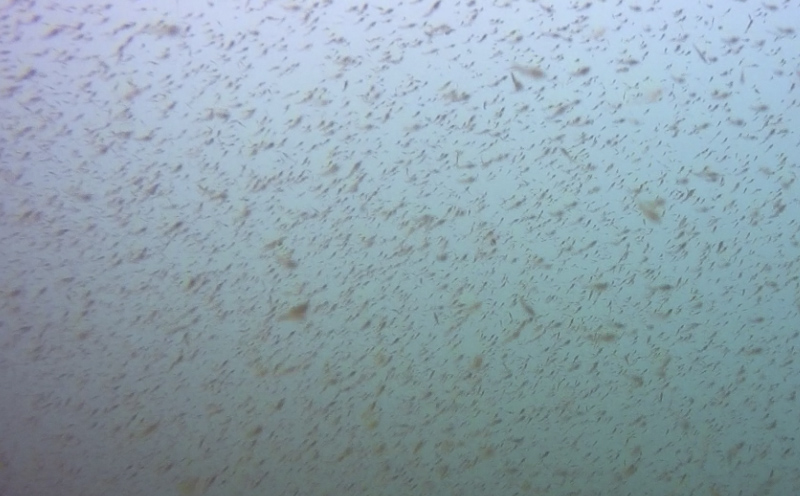
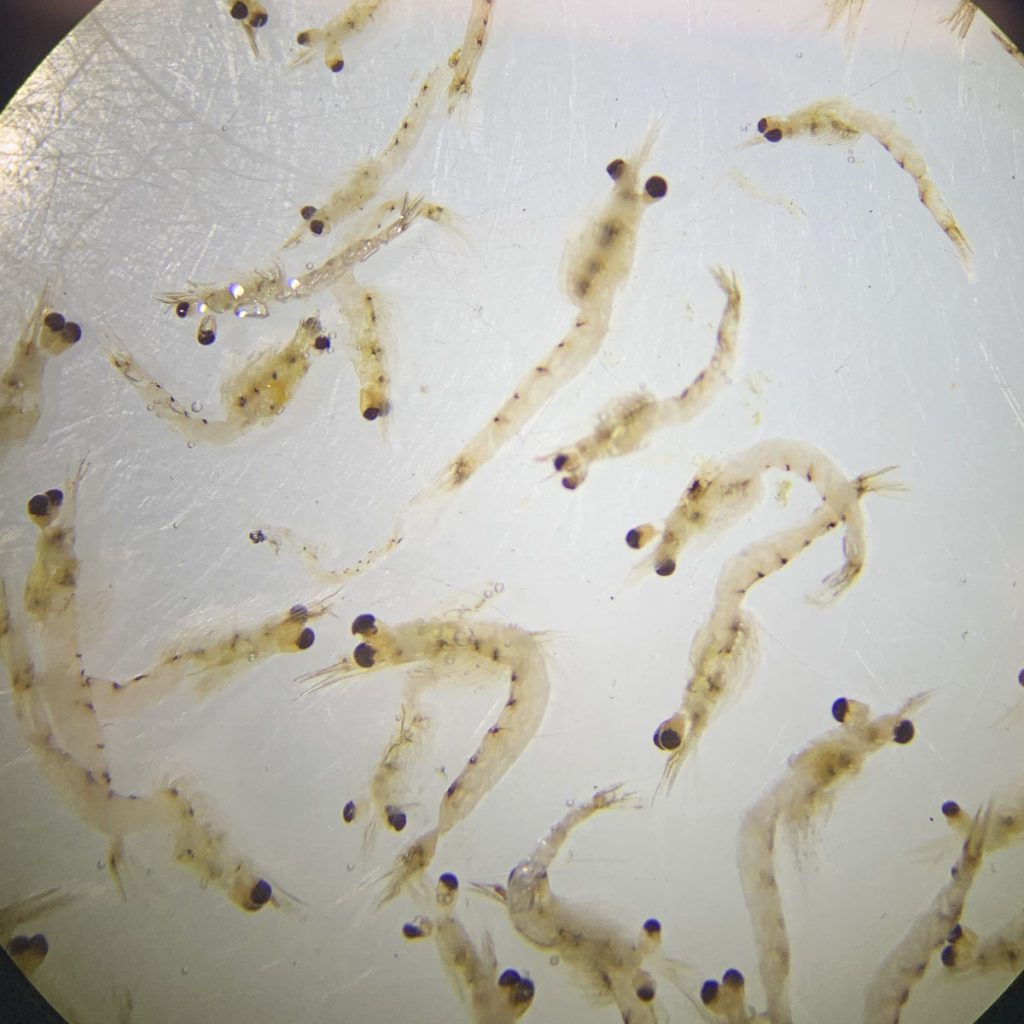
The health and sustainability of kelp forests, like most ecosystems, depends on the right balance of plants and animals. The removal of just one species can disrupt the entire system through a “trophic cascade” that impacts many other species and can ultimately lead to an ecosystem shift. Several dramatic trophic cascades have occurred in kelp forests along the U.S. west coast.
In a healthy, balanced kelp forest, sea urchins typically feed on detrital plant matter, such as small pieces of kelp fronds that break off and settle on the seafloor. Sea urchins are in turn fed upon by sea otter and sea star predators that keep sea urchin populations in check. Without one or both of these predators in a kelp ecosystem, sea urchin populations can quickly increase. If an urchin population explodes, the amount of plant detrital matter in the ecosystem is no longer sufficient to sustain the expanding sea urchin population, at which point sea urchins begin to become more active. Rather than waiting in one spot for kelp bits to float their way, they will actively start to feed on kelp stalks. If left unchecked, a sea urchin population can decimate an entire kelp forest before roaming across the sea floor to find the next food source, forming an “urchin barren”.
These are images from the same sampling station in Port Orford, Oregon two years apart. You can see the differences in both kelp health and urchins.
Healthy Kelp Forest (2016)
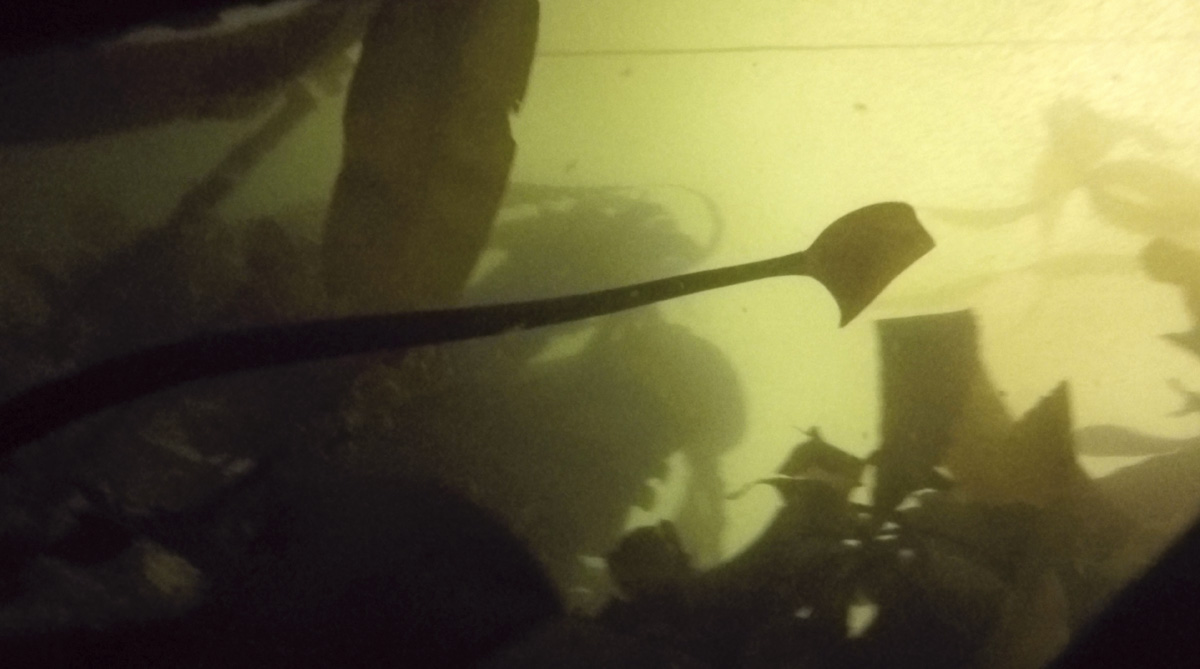
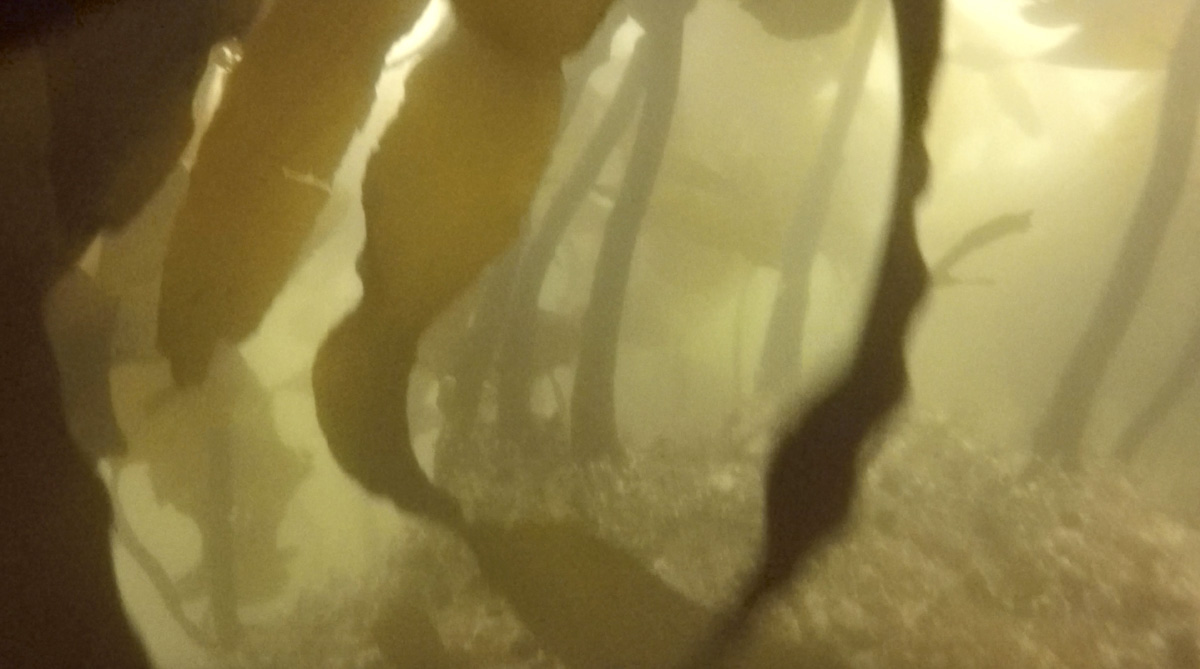
Unhealthy Kelp Forest (2018)
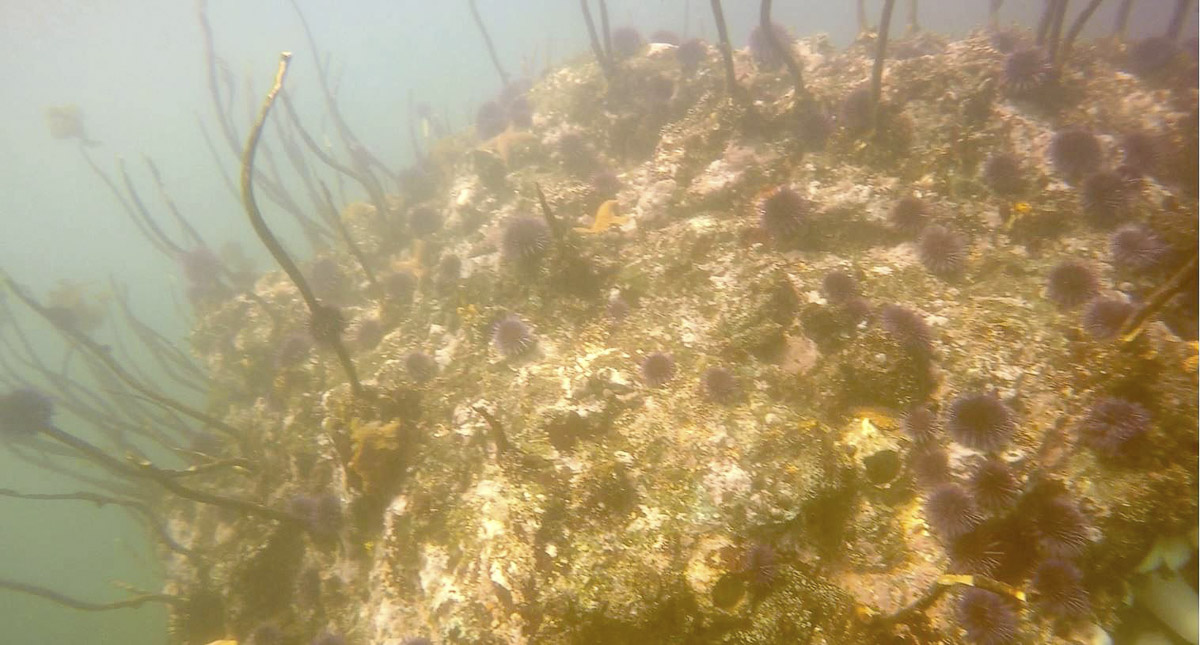
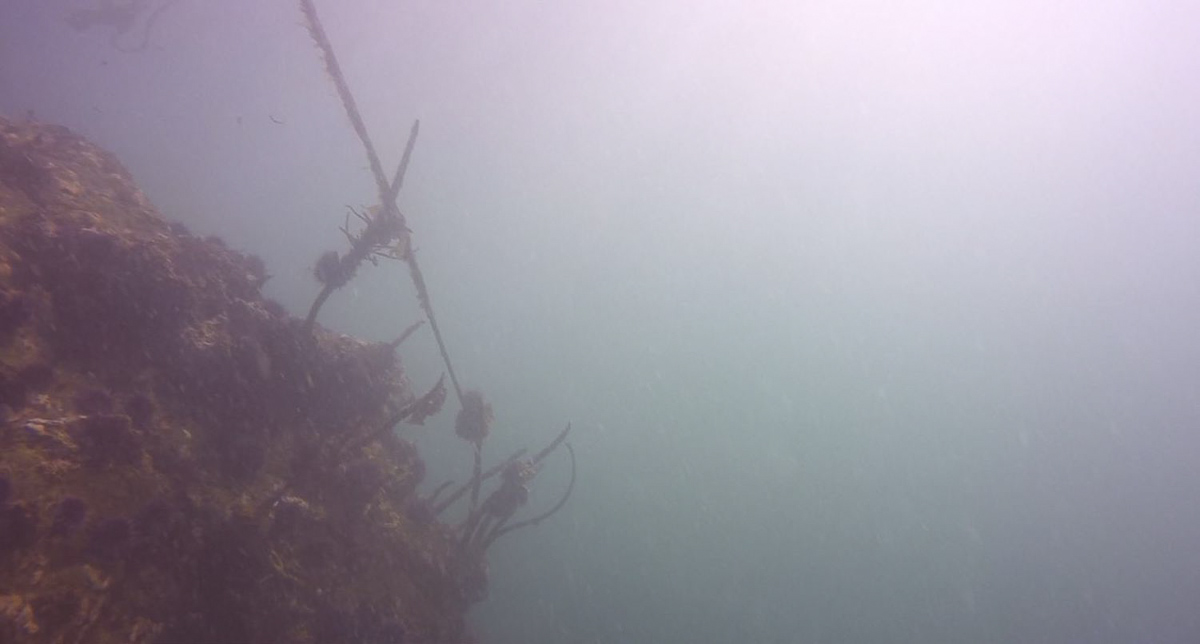
Historically, sea otters were abundant along the Oregon coast. However, due to high human demand for their thick fur, sea otters were hunted to extinction on the Oregon coast by the late 19th century. Without sea otters in Oregon waters, sea urchin populations have been kept in check by their other main predator: the sunflower sea star. Unfortunately, a massive decline in sunflower sea star populations began in 2013 along the whole west coast, in part due to changing ocean conditions, which resulted in dramatic increases in sea urchin populations and declines in kelp in some coastal areas off California and Oregon. But what does this trophic cascade between sunflower sea stars, urchins, and kelp mean for gray whales?
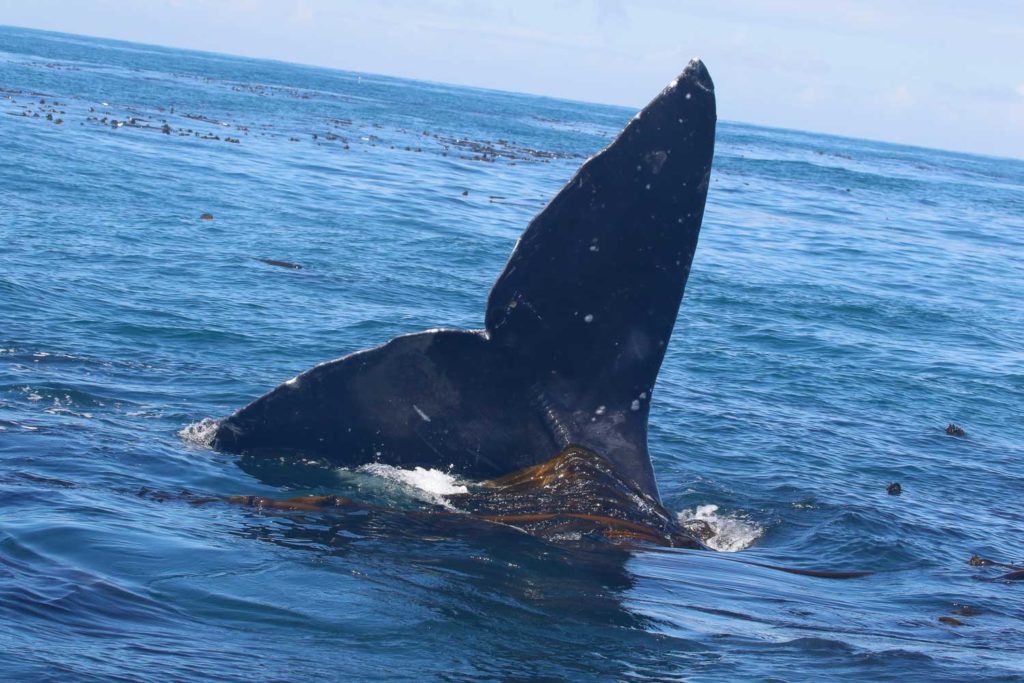
By using eight years of GoPro footage collected at the same 10 sampling stations in the nearshore, reef habitat of Port Orford, Oregon, we documented these trophic dynamics and impacts on the zooplankton prey of gray whales. In 2016 when we first started collecting data, kelp was thriving and healthy at each of our sampling stations, with large swarms of zooplankton within the kelp fronds and stalks. Notably, there were hardly any urchins present. We also saw many gray whales feeding within these kelp beds from our concurrent shore-based observation location. Unfortunately, with each passing year of data collection, we observed more and more purple sea urchins at each sampling station and the health of kelp declined throughout our study area. At the same time, the zooplankton abundance dropped off dramatically and fewer whales foraged in the area; in fact, in 2021 we only documented 30 minutes of gray whale foraging time across a six-week period! Thankfully, our nearshore environment is resilient, and in our recent years of data collection (2023 and 2024) we started to see a bounce back of the kelp, zooplankton, and gray whales in our Port Orford study area. Our study is a good example of how important long-term ecological monitoring is to detect patterns and how intricately linked all the species in an ecosystem are.
The Oregon Kelp Alliance (ORKA) is composed of stakeholders with diverse interests in kelp forest ecosystems, including commercial urchin divers, researchers, managers, conservationists, tour guides, sport divers, chefs, and other community members that value healthy kelp forests. Our research described above was conducted in collaboration with Dr. Aaron Galloway at the Oregon Institute of Marine Biology. This research will help ensure gray whales continue to frolic and feed successfully in the kelp beds along the Oregon coast.
Want to read more? Check out these resources:
Hildebrand L, Derville S, Hildebrand I, Torres LG (2024) Exploring indirect effects of a classic trophic cascade between urchins and kelp on zooplankton and whales. Scientific Reports 14, 9815. https://doi.org/10.1038/s41598-024-59964-x
Blogs:
Kelp to whales: New GEMM Lab publication explores indirect effects of a classic trophic cascade on gray whales https://blogs.oregonstate.edu/gemmlab/2024/05/06/kelp-to-whales-new-gemm-lab-publication-explores-indirect-effects-of-a-classic-trophic-cascade-on-gray-whales/
Kelp, the Multi-purpose Plant: Whale Loofahs, Calf Refuge, and Food Supply https://blogs.oregonstate.edu/gemmlab/2022/08/15/kelp-the-multi-purpose-plant-whale-loofahs-calf-refuge-and-food-supply%ef%bf%bc/
Can sea otters help kelp under a changing climate? https://blogs.oregonstate.edu/gemmlab/2019/10/29/can-sea-otters-help-kelp-under-a-changing-climate/

